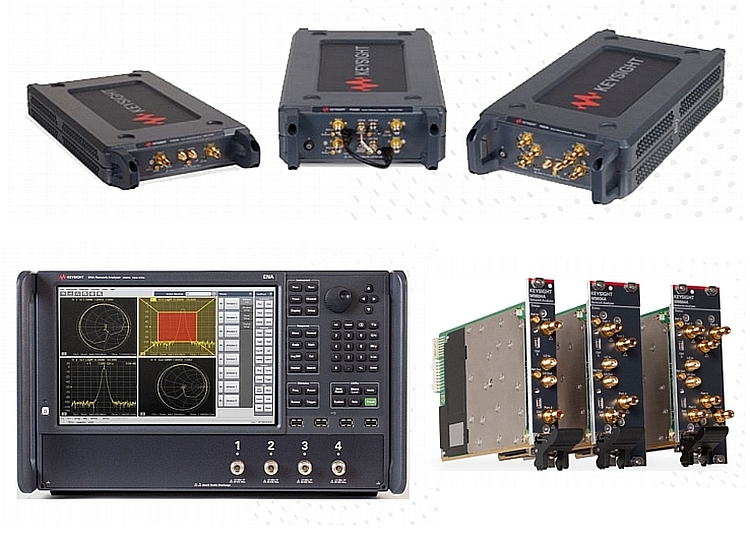- Keysight Technologies completes its families of vector network analyzers with new models.
- These analysers in the format of USB modules, PXI cards and traditional instruments extend their frequency range.
The traditional vector network analyzers of the ENA E5080B range, equipped with 2 or 4 ports depending on the model, extend their frequency coverage to 20 GHz compared to a maximum of 9 GHz for previous A versions. This range is available in several versions covering frequencies from 9 kHz to 4.5 GHz, 6.5 GHz, 9 GHz, 14 GHz and 20 GHz.
The M980xA PXI Express cards also increase in frequency. They cover frequencies up to 53 GHz while the maximum frequency of the M937xA series modules was limited to 26.5 GHz. Each module is an independent vector network analyser with 2, 4 or 6 ports up to 20 GHz, or 2 ports up to 53 GHz.
The P50xxA modules are compact instruments without front panel driven by an external PC via their USB connection. Their frequency range also extends from 9 kHz to 53 GHz compared to only 26.5 GHz for the existing P937xA series. The family consists of 2 or 4-port models up to 53 GHz, and 2, 4 or 6-port models up to 20 GHz.
The M980xA series PXI cards and the P50xxA series USB modules are available in several versions covering frequencies from 9 kHz to 4.5 GHz, 6.5 GHz, 9 GHz, 14 GHz and 20 GHz or from 100 kHz to 26.5 GHz, 32 GHz, 44 GHz and 53 GHz.
The three families of spectrum analyzers share similar measurement specifications regardless of their format (bench, PXI or USB), including a dynamic range of 140 dB at 1 GHz and a power sweep range of -60 to +13 dBm between 10 MHz and 4.5 GHz.
These analyzers integrate pulse generators and modulators, as well as spectral and time analysis capabilities, allowing RF devices to be characterized without the need for additional instruments.
These vector network analyzers allow the characterization of passive components, amplifiers, mixers and frequency converters. Traditional format instruments as well as USB modules and PXI cards share the same software platform and remote programming procedures, making it easier to use them from the R&D validation phase to manufacturing tests.






